When you install new sod, you’ll need to get on a watering schedule immediately. Read on to learn the new sod watering tips from the seasoned experts at Ryno Lawn Care. Years of hands-on experience meet cutting-edge lawn care techniques to ensure your new turf thrives from day one..
How Much to Water
Water is essential to all life…too little water and we die, too much and we drown. The same is true of the grass in our lawns. Water makes up 70% to 80% of the weight of our lawn grasses and the clippings alone are nearly 90% water.
Most people are concerned about not watering their lawns enough, but overwatering is actually a bigger problem. Following these new sod watering tips will help prevent lawns damaged or destroyed by over-watering.
Newly installed turfgrass sod has very important watering needs. The turf needs water immediately after installation to ensure the turf gets established. This will also have an impact on how well the lawn continues to flourish for years to come.
Ryno Lawn Care, LLC is always happy to help with local jobs in the D/FW area. Go to our Sod Installation Service page for details.
Also, different grass types require different amounts of watering. Read what Texas A&M University has to say about Texas Turfgrasses.
When To Water New Turfgrass Sod
Begin watering new turfgrass sod within a half hour after it is laid on the soil. Apply at least 2 to 3 cm. (1 inch) of water so that the soil beneath the turf is very wet. Ideally, the soil 7 to 10 cm. (3 to 4 inches) below the surface should be moist.
- First 2 Weeks After Sod Installation: Water every day, keep the soil moist
- 3rd Week After Sod Installation: Water every other day for 1 week
- After 3 Weeks go to a Normal Watering Schedule of 1 inch per week
New Sod Watering Tips
- Pull back a corner of the turf and push a screwdriver or other sharp tool into the soil. It should push in easily and have moisture along the first 7 to 10 cm. (3 or 4 inches), or you need to apply more water.
- Make absolutely certain that water is getting to all areas of your new lawn, regardless of the type of sprinkling system you use. Corners and edges are easily missed by many sprinklers and are particularly vulnerable to drying out.
- Runoff may occur on some soils and sloped areas before the soil is adequately moist. To conserve water and ensure adequate soak-in, turn off the water when runoff begins, wait 30-minutes to an hour and restart the watering on the same area, repeating this start and stop process, until proper soil moisture is achieved.
- As the turf starts to knit its new roots into the soil, it will be difficult and harmful to pull back a corner to check beneath the turf, but you can still use a sharp tool to check moisture depth by pushing it through the turf and into the soil.
- Water as early in the morning as possible to take advantage of the daily start of the grass’s normal growing cycle.
- If the temperature approaches (98.6° Fahrenheit or 37° Celsius) or if high winds are constant for more than half of the day, reduce the temperature of the turf surface by lightly sprinkling (syringe) the area. This sprinkling does not replace the need for longer, deeper watering, which is still needed.
- Infrequent and deep watering is preferred to frequent and shallow watering because the roots will only grow as deeply as its most frequently available water supply.
How to Water New Sod
Proper watering techniques are a critical aspect of lawn watering, equal in importance to the issues of when to water and how much to water. Here are several key factors to proper technique:
Understand the advantages of different sprinkler designs, because each type has its advantages and disadvantages and its proper use will be determined by the type of sprinkler you select.
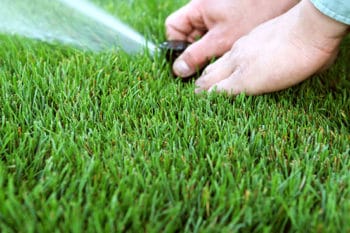 In-Ground Systems require professional design and installation and they require routine adjustments and regular maintenance to be most effective and efficient. We are happy to help with design and installation of sprinkler systems. Check out our Lawn Irrigation Service page.
In-Ground Systems require professional design and installation and they require routine adjustments and regular maintenance to be most effective and efficient. We are happy to help with design and installation of sprinkler systems. Check out our Lawn Irrigation Service page.
The greatest mistake made with most in-ground systems is the “set it and forget it” philosophy. This fails to account for the changing seasonal water requirements to maximize turf grown. Not to mention allowing the system to operate during or following a multi-inch rain storm.
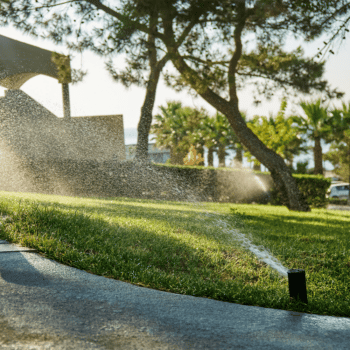
Manual Watering
Hose-End Sprinklers range in complexity, cost and durability, but are highly portable and can provide uniform and consistent coverage, when properly placed on the yard and adequately maintained.
Sprinklers that do not throw the water high into the air are usually more efficient because prevailing winds are less disruptive of distribution patterns. The potential for evaporation loss is reduced and trees, shrubs and other plants do not block the pattern (or are very noticeable if they do).
Several times during the growing/watering season, check for blocked outlets, leaking or missing gaskets, or mis-aligned sprinkler heads is important, regardless of the sprinkler design.
Verify watering uniformity can be accomplished with a very simple and inexpensive method that uses only 4 to 6 flat-bottomed, straight-sided cans (tuna fish, cat food, etc.), a ruler and a watch.
Tuna Can Test for Lawn Irrigation
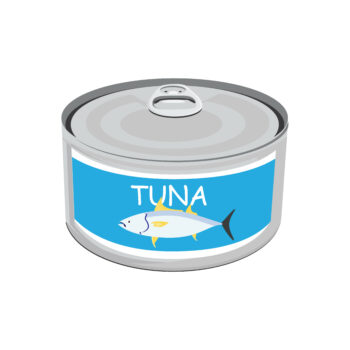
- Arrange the cans at random distances away from any sprinkler.
- Run the sprinkler for a specific amount of time or run the water until a specific amount of water is in at least one can, say a 0.5 inches.
- Measure the amount of water in each can, checking for uniformity. You will see some variation, but a difference of 10-percent or more between any two cans must be addressed. You can do this by replacing or adjusting the sprinkler or relocating the system.
Use this measuring method across an entire lawn that has an in-ground irrigation system to assure maximum coverage and uniformity.
Watering difficult areas such as slopes and under trees requires special attention to achieve maximum benefit.
For Slopes, See Watering Tip #3
For areas under and near trees you need to know the water requirements for the specific trees, and the grass. Despite having deep “anchor” roots, trees take up moisture and nutrients from the top six inches of soil. Grass is also grabbing water and nutrients from the same area. Trees and turf will compete for water.
Watering sufficiently for the grass may over-water some varieties of trees and under-water others. A common solution is to not plant grass under the drip-line of trees. Instead, use that area for perennial ground-covers, flower beds or mulch beds.
HOW MUCH Water Is Applied & Needed
The amount of water your lawn requires and receives will determine its overall health. Keep in mind that too much water can ruin a lawn just as fast as too little.
The standard water requirement for most lawns is one inch per week. However, this will vary between different turf species and among cultivars within a specie. There will also be varying water requirements for seasonal changes and soil types.
Look at your lawn to determine its water needs. Grass in need of water will have a grey-blue cast to it, rather than a blue-green or green color. Foot prints will still appear after a half-hour or more on a lawn in need of water. While on a well watered lawn foot-prints will completely disappear within minutes.
Use a soil probe, such as a screwdriver or large spike to determine how dry your lawn is. If you can push the probe into the soil easily, it is still moist. If you have difficulty, it is time to water.

Wrapping Up
In conclusion, proper watering is crucial for the successful establishment of your new sod. By following these watering tips, you’ll give your lawn the best chance to develop strong roots and thrive in its new environment.
Remember to keep the sod consistently moist but not waterlogged during the first few weeks, gradually reducing watering frequency as the grass establishes itself. Pay attention to signs of both under- and over-watering, and adjust your routine accordingly.
Weather conditions and soil type may require you to fine-tune these guidelines, so stay observant and responsive to your lawn’s needs. With patience and proper care, your new sod will transform into a lush, healthy lawn that enhances the beauty of your property for years to come.
If you’re ever in doubt about your watering practices or notice any concerning issues with your new sod, don’t hesitate to consult with the sod Pros at Ryno Lawn Care for personalized advice.
View PDF: New Sod Watering Schedule Tips

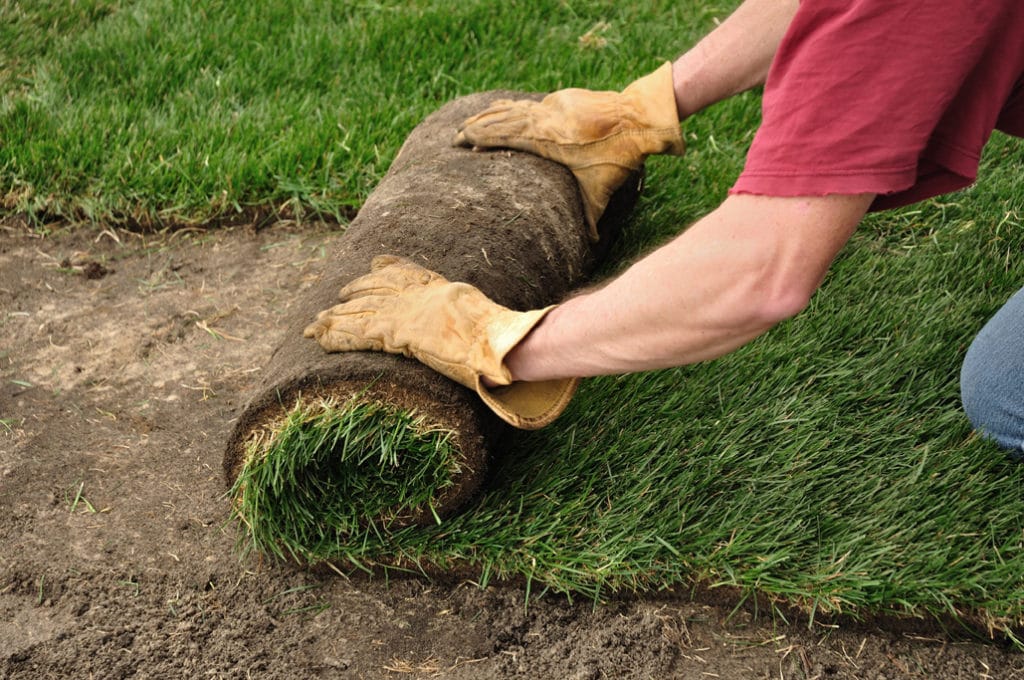
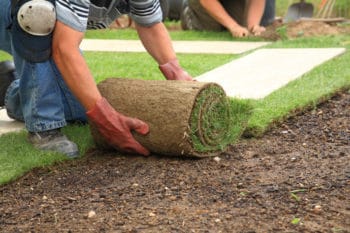

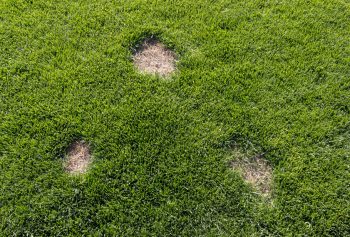
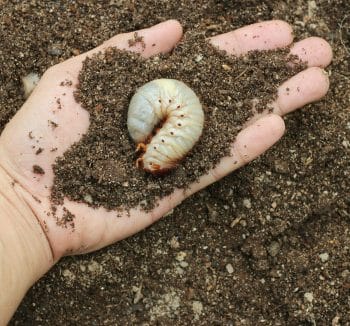
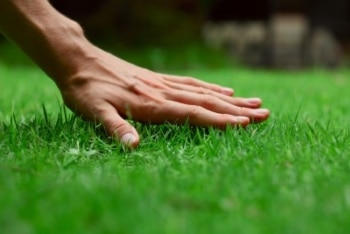
8 Responses
Thanks to the author. This piece is detailed. I’ve been wanting to grow the turfgrass, I was thinking watering about 30 minutes after laying the sod is too early. I’ll work on this, and I hope to get amazing results. The last time I tried this, I watered it about 2 hours after laying the sod, but I got a poor result.
I love your posts as its easy to since you share lots of information, thank you
Thanks for sharing this blog. I hope it can help many people especially the garden enthusiast here
Thanks for sharing these useful tips for lawn maintenance. These watering tips for different grass types will make your lawn look healthy and beautiful.
Thanks for your tips on how to water new sod. My sister is thinking about getting sod for her yard. It could be really nice to get it installed by a professional.
I love all of this information and they are so simple and easy to implement! Thank you.
I love how you go into the math of it all also. A good irrigation system is definitely worth getting if you want a good-looking and green lawn. Thanks for sharing the tips on keeping our sod/grass pristine, it means a lot!
The other day, my sister mentioned she’d like to install new sod in her front and back yards to make her house more appealing to potential buyers. I’m glad you elaborated on learning proper watering techniques to water your new sod effectively, so I’ll make sure my sister’s aware of this immediately. Thanks for the advice on checking different sprinkler designs before choosing one for your sod.